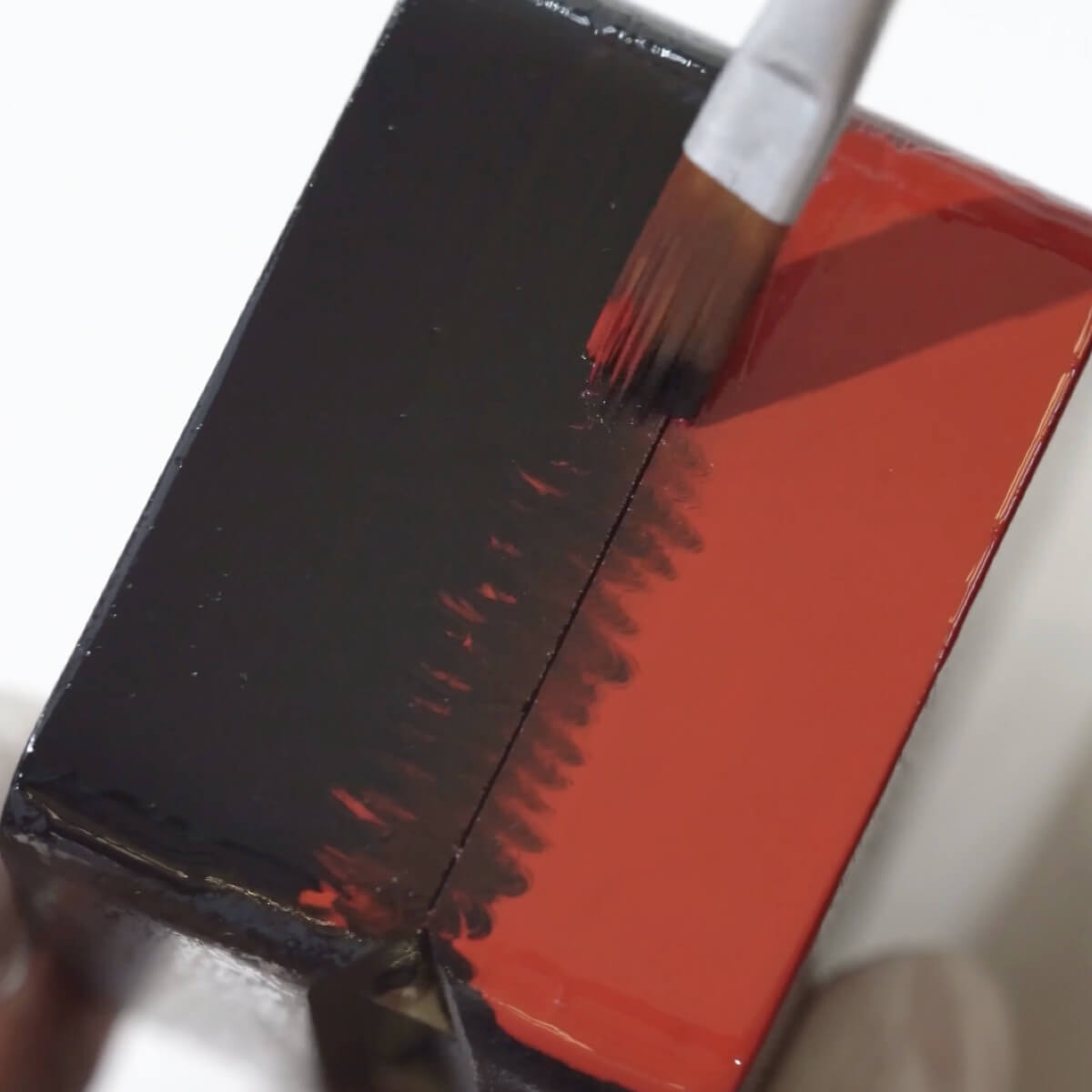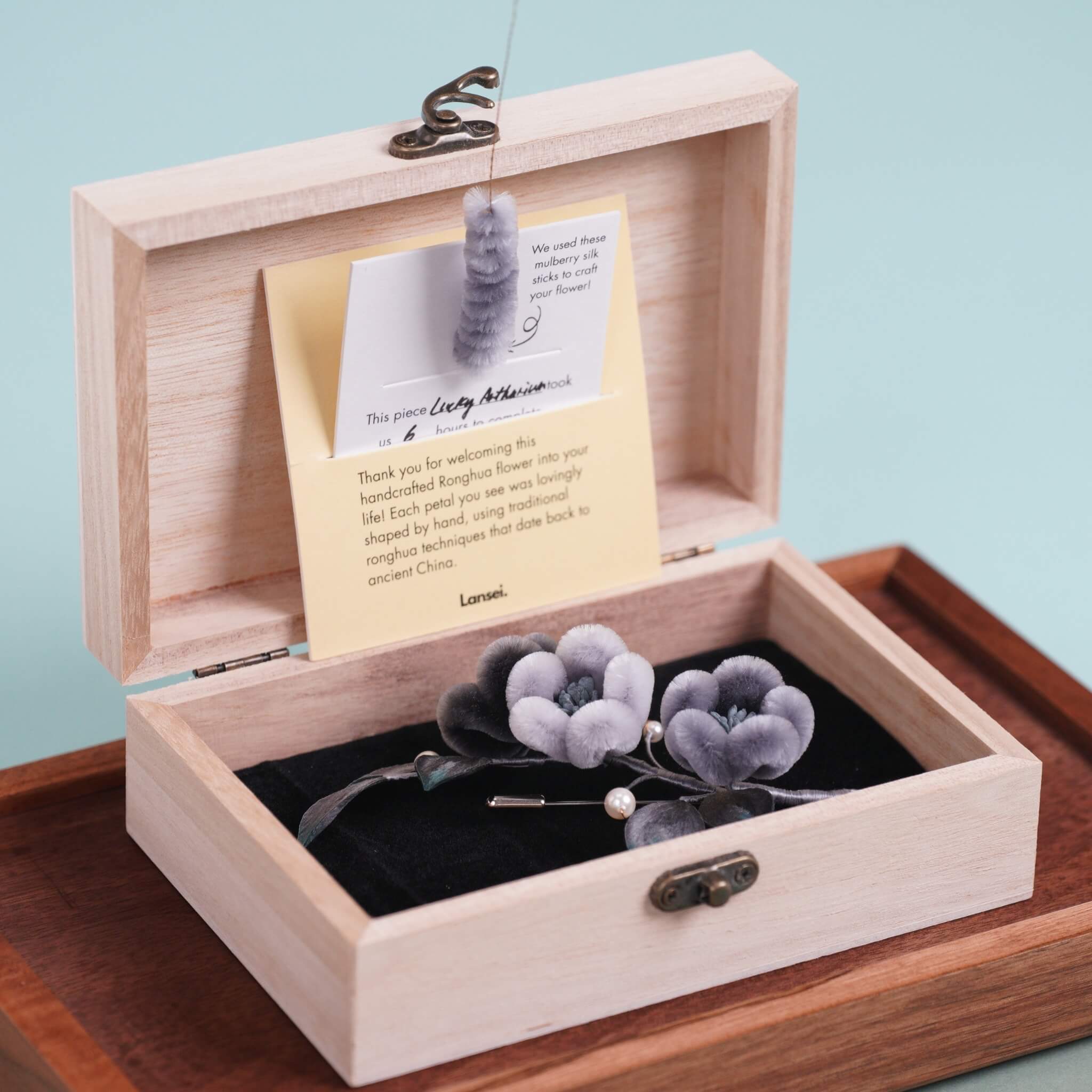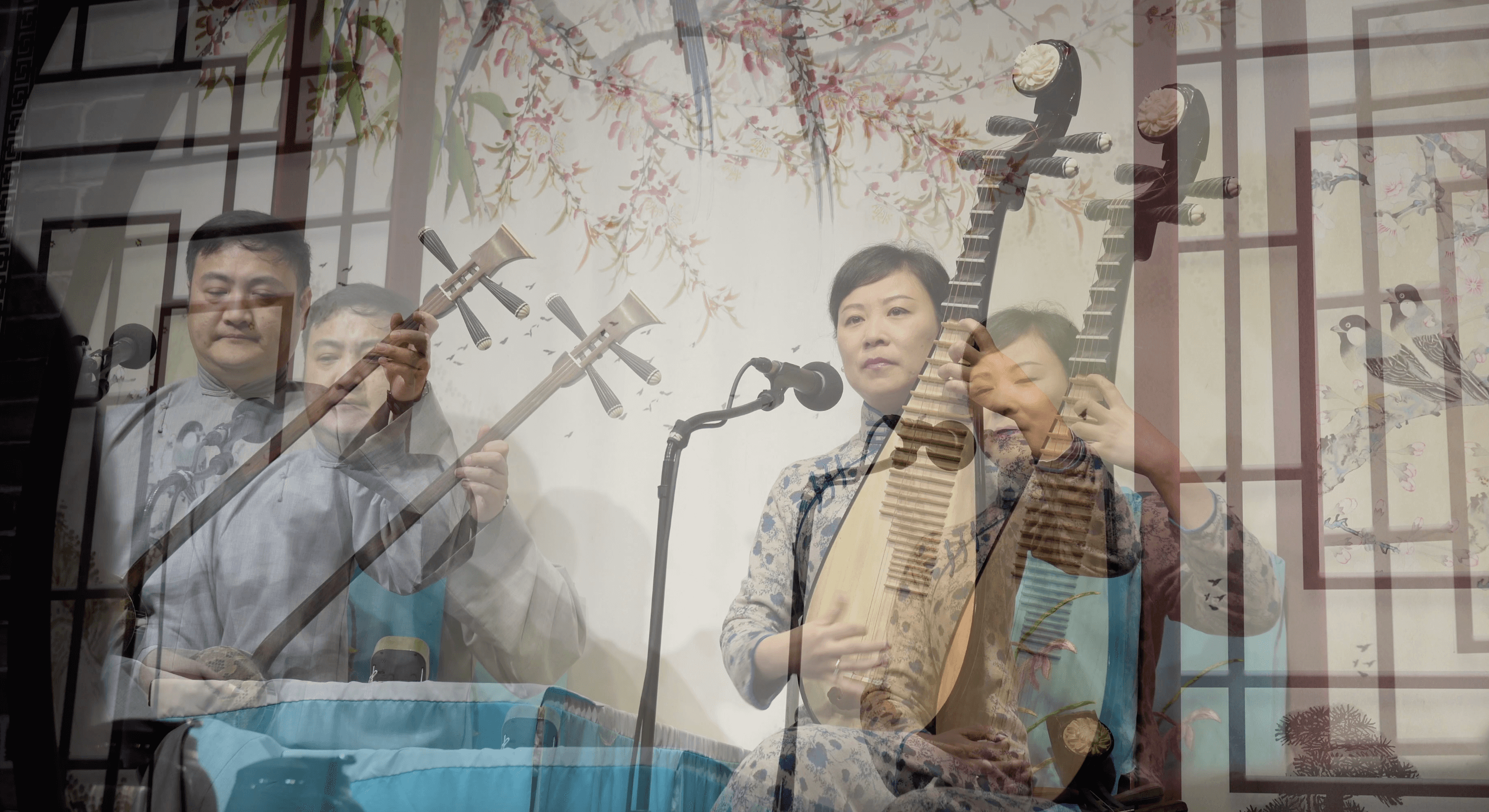Suzhou embroidery is the most representative type of Chinese embroidery. It’s one of the well-known "four great embroideries of China" along with Cantonese, Sichuan and Xiang embroidery. It already has a history of more than 2,000 years and is an important form of handicraft for Chinese art and folk custom.
Suzhou embroidery is famous for “精细雅洁“, meaning fine and delicate. Its workmanship is particularly exquisite and the temperament of the work is elegant.

Zhen Hu town is where 80% of the Suzhou embroidery handiworks come from. And in the town, there’s a famous street full of embroidery studios and shops, it’s called Xiu Pin Jie.
This street is 1.5km long, and along the streets, you can see sooo many studios and shops on both sides. They are dealing with a great variety of embroidery business, from retail to wholesale, from face-to-face to online shopping, from domestic products to high-end customisation.

I came here and found an inheritor who is willing to teach me some basics about Suzhou embroidery.
As this is my first time learning this form of handicraft, Mrs Xu gave me 2 very basic patterns to choose from. I chose the orchid with butterflies, which is quite a classical pattern compared to the blue and white rabbit.
My lessons started from thread splitting and knotting. Normally, one thread can be split into 16 pieces! 16, can you imagine?! The finest thread is only 5-8 micro metres in diameter, which is one tenth as thin as a human hair. It’s so light that it can easily float in the air. Mrs Xu has great confidence in me. For my first project, we will work with only a quarter of the normal thread.

Knotting is another tricky task. With just three moves of the fingers, Mrs Xu can make a knot easily in no more than a second. But for me, well it took me no more than a second to realise how clumsy my fingers are.
One day quickly passed by, and I only finished 2 small pieces of leaves.
I started my second day with full ambition. I wanted to finish all the leaves of the orchid. And apparently it didn’t happen.

After observing the other embroiderers working on their masterpiece, I got some inspiration. They move so fast with one hand above the frame and the other beneath. The needle is passing up and down quickly between these two hands, like a wave. They can keep this position for 3 hours, sometimes even half a day. Normally, they start learning embroidery with their mum at the age of 10, and now they are around 60 years old.

For almost half a century, they have been living with this silk frame and small needle. It normally takes 2 months to finish one piece of handiwork like this. After completion, they will be ready for sale, and with the help of online shopping and live sales like Douyin, Chinese version of TikTok, they can be purchased remotely and sent to different locations all over China, and placed in a house, an office, or a store. A price of work like this may be sold between 8000 to 10000 RMB.

The embroiderers have been residing in this small town for almost their whole life, but their works have travelled thousand and thousand miles away.
At 7:30 in the morning, they come to the store and start embroidering. 11:30 to 12:30 is the lunch break. And they will finish at 5pm, go back home and prepare dinner for the family. The same routine, repeat again and again. Their work routine may be boring, but the handiworks they produced are so colourful and diverse.
On the third day, Mrs Xu decided to teach me how to embroidery the blossoms first. It was a Chinese festival day, Qing Ming Jie, this is when the family gathers to pay tribute to ancestors. The son and grandson of Mrs Xu also came back, so Mrs Xu invited me to her home for lunch. This is such a friendly and sincere family living in the beautiful countryside, just a mile away from the store. Their home is surrounded by loads of flowers. However, the younger generation have switched to the office jobs in the city, and no one else is inheriting Mrs Xu’s techniques in this family. Nevertheless, she is still managing this embroidery store with hard work to support her family with a better life.
On the fourth day, I finally finished the orchid. Honestly, I started feeling pain from my back and neck. The dryness of my eye is also very annoying. Mrs Xu embroidered those two butterflies for me, as a gift. Till now. I can roughly say that the work is done, after nearly 25 hours of embroidering. 25 hours! For just a small orchid.
The fifth day is the framing day! On the fifth day, Mrs Xu and I sent the first embroidery work of my life for framing and my experience of Suzhou embroidery also ended on this day.

When I left, the two embroiderers were still sitting there filling the frame with stitches. When I looked at the embroidery work again, I realised it’s actually a solid form of their time.Each stitch basically equals one sec of their life. Their works can be sold at the price vary between 6000 to 20,000. And isn’t this also the price for exchanging their youth with this art of handiwork? And before they realise, the black hair turns white.
There are only a few embroiderers who are aged under 35 in this street. The reason behind is quite clear. The younger generation are no longer attracted by this deal. They would prefer working for the banks, marketing companies, tech firms, or just normal offices, rather than sitting still for a long time and dealing with threads and needles.











Laisser un commentaire
Tous les commentaires sont modérés avant d'être publiés.
Ce site est protégé par hCaptcha, et la Politique de confidentialité et les Conditions de service de hCaptcha s’appliquent.